
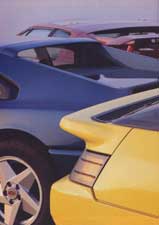
Pretty Polymers
A cynical Roger Bell
heads west with three glassfibre-bodied supercars –
two are old stormers, recently reworked, the other a new arrival from a
virtual unknown
He returns home invigorated, impressed and rather surprised at his conclusions
CAR Magazine, June 1992
by Roger Bell
photography by Richard Newton
Spent forces, we muse, heading west for an Exmoor shoot-out. Consider the facts. Lotus sales are languishing, Alpine has an image problem and no-one has heard of Venturi. Three lost causes in a supercar sector decimated by recession. So much for Formula One as a marketing tool. Would Esprit SE registrations soar if Johnny Herbert made it to the podium? Probably not. Despite the Regie's V10 at his back, we couldn't see our Nige doing much for the Renault Alpine A610, either, even less Bernard Gachot of the Venturi-Larrousse team boosting Venturi sales in Britain.
What is this Venturi, anyway? Just another plastic-bodied special attempting to ape Ferrari at two-thirds the cost? It'll never make it, especially now the Japanese have cracked the supercar secret. Cynics say it's a dying breed, this mid-range stratem of European exotica, squeezed between downrange upstarts (Calibra Turbo, Escort Cosworth, Nissan GTiR, Mazda Rx-7) and top-drawer extravaganza (Ferrari 348, Mercedes 500SL, Porsche Turbo). If Porsche can't hold the middle ground with its 944/968/911, what chance the stars of plastic fantastic?
The rain-soaked grind along the M27/A31, with mumbling Michelins drowning the stereo, serves only to fuel our doubts and pessimism. Who's going to fork out £52,000 for a Venturi 260 when they can buy a Honda NSX for slightly more? Who wants. . .ssshhhwooooff. The road opens up into a long sweep of tempting tarmac curling over Cranbourne Chase. I'd forgotten what a cracking route it is from Ringwood to Shaftesbury on the B3081. Negative thoughts about French pretenders dissolve in a great gob of herculean brawn, contemptuously delivered with an eerie hiss from the thrusting turbo. Phew. This Venturi is seriously quick. Faster than an NSX. Quicker, where it matters, than an Esprit SE. Lining up the kinks ahead, the all-ventilated brakes kill 50mph with gentle caress. There it is again, that impression of indomitable might, the hallmark of a classy supercar. What next? Nothing less than dazzling alacrity. The Venturi doesn't corner like ordinary cars, not even like an NSX; the Honda's steering is not the same hypersensitive league. Wristy inputs, considered rather than carried out, suffice to whip the 260 through bends with such kart-like precision you have to rethink your steering technique telepathy is nearer the mark than physical effort.
Plastic special, mom pied. The Venturi is a class act, designed and built by artisans with a real sense of purpose. Shouldn't Aston Martin be building cars like this? The 260's quality and dynamic prowess raise our spirits on the road to Shaftesbury and beyond. The opposition at our Exmoor rendezvous will have to be very good to match Gallic flair of this order. Would they be up to the job? The Esprit SE has been recently fettled but is essence much older than the Venturi. And the revamped A610, with which Renault perseveres against heavy odds, would surely succumb to a mid-engined paragon.
The Venturi seems little the worse for its chequered history. Manufacture de Voiture Sport (MVS) was founded in 1984 by former Peugeot designer Gerard Godfrey and engineer Claude Poiraud. The late Jean Rondeau (Le Mans winner in 1980) had a hand in the development of the fledging two-seater Ventury (later Venturi), as did racing drivers Mauro Bianchi and Jean-Pierre Beitoise, to drop a couple more names. Strut-type suspension gave way to double wishbones and multi-link, the prototype's four-cylinder Peugeot turbo motor to a PRV V6. After Xavier de la Chappele's Primwest France took a controlling stake in MVS, production was moved from Cholet to a purpose-built plant near Nantes, geared to make 500 Venturis annually. Co-sponsorship of the Larrousse F1 team, now owned by MVS, came after a fresh injection of capital from Omnium Europe.
Through Norfolk-based importer Raptor (UK) Ltd, Venturi offers five models, costing from £43,694 to over £62,000. The 210s, Coupé and Cabriolet, have 2.5-litre, 210bhp turbocharged engines, the 260s over 2.8 litres and 260bhp. There's also a normally-aspirated 156bhp auto. All are based on a sheet-steel monocoque chassis clothed by a neat, compact, composite body (Gerard Godfrey's original design) that's all the better for being alluringly understated if not a bit dated. That the MVS does not flaunt its huge ability through outrageous display or excessive girth is greatly in its favour. At 161 inches long, and 67 inches across (mirrors excluded), it is smaller than the Lotus Esprit and Renault A610, and all the better for it. At a svelte 2768lb, it's lighter, too.
The 2849cc intercooled V6 engine, extensively modified by Venturi – it has a long-throw crankshaft, high compression pistons and Renix-based injection – is said to yield 318lb ft of torque at only 2000rpm. Curiously, you feel its mighty thrust but hardly hear it; the turbo's intake hiss, like a chill wind through a chink, drowns out all other sounds when the throttle's down, more's the pity.
Renault does not claim quite such massive peak torque from its own 2975cc version of the same PRV engine, though it does pledge 250lb ft of it from 2000 – 5200rpm for the new A610 – said to be 80 percent new, even though it does look like a Nissanised development of the supplanted GTA. Some of the old individuality has been lost to pop-up headlights and straked side-pod intakes, but the Alpine's outer skin is still as eye-catching as it is smoothly finished.
Much has been changed for the better on the A610; just to recap, the structure – a bonded composite of steel and plastic – is stronger, for the better suspension control and crash protection; the intercooled engine's bigger and more powerful (output's up from 200 to 250bhp); the weight distribution is more equitable 43/57 (instead of 40/60); the suspension, steering, brakes and tyres have been uprated; and the dash and cockpit – a genuine two-plus-two though there's no proper boot – have been modernised. Standard equipment includes ABS and air-conditioning, as on the Lotus, as well as remote-control hi-fi, sophisticated security and all the usual trappings of luxury. Renault emphasises that the A610 (the Alpine name is not used in Britain) is less than rakish sportster, more the marathon continental cruiser, and we wouldn't quarrel with that.
At £37,980 (£39,550 as tested with leather and CD) the A610 costs significantly less than the £47,979 Venturi 260 Coupé (£51,895 as tested with air-con, leather and metallic paint – but not ABS) and the £48,260 Lotus Esprit SE (£49,140 with metallic paint).
However remarkable the specific output of the Lotus's intercooled 16-valve twincam– and 264bhp from only 2.2-litres is remarkable by any standards– the presence of only four cylinders in a 50-grand car is hard to swallow. A raft of detail improvements announced last October saw the cockpit of the Stevens reskin enlarged (there's more clearance for knees, elbows, head and legs) as a result of revised packaging. The seats are wider, the pedals better arranged, the doors wider opening, rear visibility improved, not least by stilt-mounting the huge rear wing (not fitted to the lesser 215bhp Esprit) that's said to reduce lift and drag – down to Cd 0.33, which is almost as good as that of the Renault and Venturi.
Compared with the velvet-smooth, counter balanced V6s of the two French cars, both notable for engine refinement, the Esprit's snarling slant-four sounds hard-edged and coarse, even metallic when idling. Nor can it match the PRVs' vivid mid-range oomph, torque (261lb ft of it) peaking nearer 4000rpm than 2000. An occasional reluctance to pull on all four cylinders – a disquieting habit when overtaking – undermined our faith in the Esprit's ability to accelerate out of trouble. All three cars were reluctant hot starters, incidentally, and the noise of the Renault's ignition off cooling fan tiresome. Not so the note of its quiet engine, free from the turbo hiss that mars the Venturi, or the harshness that underlines the Esprit's rortiness.
Despite its modest displacement, the Lotus is blisteringly quick and its delivery more linear than that of the lungeing French cars, which tend to come on strong quite abruptly; turbo thrust needs a delicate right foot smoothly to control. Neither, however, suffers from the all-or-nothing delivery that plagued earlier versions of the blown GTA. Nor are they high-rev screamers like the Lotus, which will pull with burgeoning power to 7400rpm – well beyond the modest limit of the all-alloy, 12-valve PRV, which throws its best punch at mid-range revs.
For the record, all three cars will top 160mph. Although Lotus claims the best acceleration (0-60mph in 4.7 seconds, 0-100 in 11.9 ), on the road the Venturi feels the quicker car, particularly when tapping its rich, red-blooded vein of mid-range muscle. It also has the best gearchange – short in throw, precise in action and racing-car quick, stab, stab. You wouldn't want to live with the atrociously heavy clutch in town for very long, but its fluidity and resolution add greatly to the Venturi's appeal as an open-road slingshot.
The lighter, looser shift of the Lotus's gearbox (Renault-sourced, like the Venturi's) is less demanding physically (as is its smooth, assisted clutch) but not so uplifting emotionally. Ditto that of the A610, for which Renault claims 165mph and the same sub-25-second standing kilometre time as the MVS. The way all three machines reel-in straights with scintillating revity makes the average hot-hatch feel pedal-car tame. Exploit their dashing performance, however, and you won't get much more than 20 miles to the gallon in any of these cat-cleaned streakers.
Overtaking zap is just terrific. So is traction, promoted through tail heaviness and 245-section rear tyres that afford almost as much grip as 4x4 drive. Circumspection is needed in the wet – all three cars are capable of wheelspin in second – and it would be imprudent to catapult out of roundabouts at full thrust even in third. Otherwise, there are few exclusion zones for chassis as accomplished as this.
After the Venturi's super sensitive steering, which would attain perfection with a little more weighting, that of the unassisted Esprit, downright heavy on manoeuvres, feels quite sluggish. Gentle pressure on the 260's wheel rim will suffice for most corners, clumsiness being betrayed by a ragged line. Meatier inputs are needed to steer the Lotus. The trade-off is steering intimacy of a very high order which makes the SE endearingly communicative.
Somewhere between the two comes the A610. Speed-sensitive assisted steering that's less sharp than the Venturi's denies the Renault benchmark agility. Even so, it's precise, accurate and not without subtle feel. What's more, the Alpine seems to defy the laws of physics. The pendulous effort of the outrigger engine that ought to promote instability doesn't materialise. If this car has vices beyond those induced by great potency, they went undetected. Although less snappy than the Venturi, and not so intimate as the Lotus, the Renault handles and corners brilliantly. It is, if you like, the perfect compromise between the extremes of its two rivals.
Like the Porsche 911, the Renault benefits more than most cars from ABS, which prevents the lightly laden front wheel from locking up in the wet. The Venturi is not so endowed (we discovered that the hard way) but its brakes are nicely weighted and the pedal firmer in feel than that of the soggy ABS-backed Lotus.
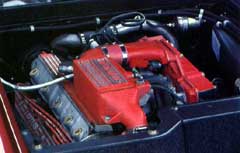
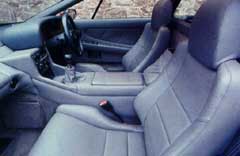
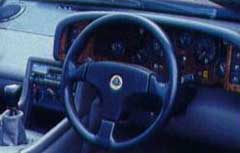
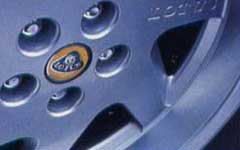
The Renault wins on comfort. Although handling alacrity is rooted in stiff, wooden-riding suspension, the A610 has outstandingly bum-cupping seats, fine-tuned by knurled wheels. Only the cramped, floor-hinged, 911-style pedals mar an otherwise excellent driving position. That of the Venturi is even better, though its powered seats, short on lumbar and lateral location, are not so supportive. It rides well, though, particularly at speed, when the hump and thump of urban pottering dissolves into creamier progress. The same is true of the looser Lotus.
Although its doors open 15 degrees more, getting in and out of the wide-silled Esprit is still awkward; we all poked the handbrake up a trouser leg more than once, and felt a mite intimidated by the car's absurd width. The pedals are not at comfortable leg-stretching distance but they're still a bit cramped. There's not enough elbow-flashing room for your gear-changing arm, either, and the fixed-height seats are not so embracing as the Renault's. Despite these and other ergonomic flaws, you feel snug and at ease at the Esprit's controls – most of them borrowed from elsewhere. Some of the fittings (door handles, air vents, ash trays for instance) look cheap and incongruous, and the removable glass roof ( which stows in the boot if you've got not luggage) cannot be 'blacked' out with a blind. The SE's finish may be light-years on from that of earlier Esprits, but it still at best patchy for a car costing nearly £50,000.
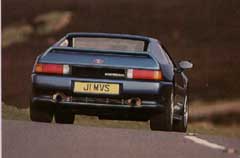
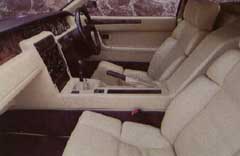
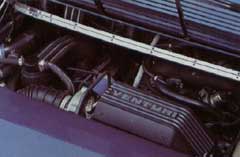
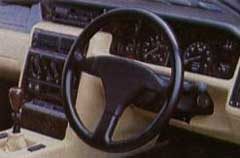


That of the Venturi is superior. Aston Martin could not better its striking leather-and-walnut cockpit, and Lotus cannot match it. It's tasteful, opulent and superbly executed (MVS makes much of its purple-prose brochure of cabin craftsmanship). Even though most of the facia's component parts – switchgear, vents, heater controls – are sourced from lesser cars (trying to identify them passes motorway time), the Venturi's dash is clean and cohesive. It's small, reflecting instruments are no easier to read than the Esprit's, attractive though they look as a cluster, but there's nothing to make you feel ill at ease at the leather-rimmed wheel of this tearaway, even less to induce self-consciousness. Pride and well-being, but never embarrassment. You do, however, feel deprived of aural uplift. Everyone condemned the hissing turbo as intrusive and uninteresting. Venturi would do better to cultivate a more stimulating sound – as Honda has done with the NSX – than that of a hoover nozzle with your finger up the spout.
Like many specialist supercars, the Venturi is as strong on basics as it is weak in some detail. Heavy clutch and power wheeze apart, its windows are prone to misting and the cockpit can get intolerably hot, even with the feeble air-conditioning full blast. And this in April. Despite its crude and awkwardly placed facia outlets – tucked beneath a timber-encrusted nacelle that looks strangely unfinished – the Lotus's air-con works quite well. The Renault's is even better, though stronger fan boost would not go amiss.
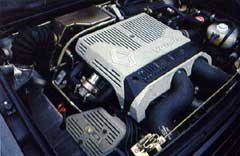
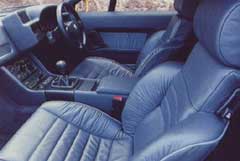
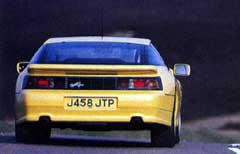
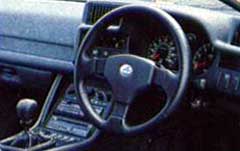
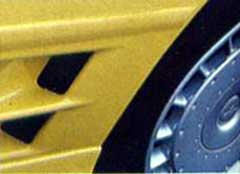
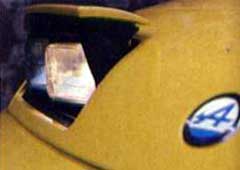
The A610 is not bereft of irritation (no proper clock, a door that's reluctant to slam shut, bizarre clap-hands wipers, noisy at-rest cooling fan, boot or plus-two accommodation – not both), but it is the most thoroughly developed car of the three, and perforce the easiest to live with. The placticky dash does not impress visually but at least it's ergonomically sound; even the radio and trip computer are under fingertip control.
The flamboyant Lotus is a wonderful driving tool that's as quick as anything on four wheels, this side of the six-figure behemoths. But it's a flawed gem, the SE, not to say a very expensive one. Excessive girth militates against agility, and the engine that punches beyond its weight denies it classy timbre. The effortless wallop of the French cars unmasks the Lotus's Achilles heel: four cylinders where six or more are needed.
The Renault A610 does not have the magic responses of the irresistible Venturi 260 – the most exciting car here as well as the most luxurious – but then it does not suffer from flaws to the same extent, either. Were the Venturi as exciting in voice (and cool in cockpit) as it is fast and agile, we'd be hailing it as a threat to Ferrari. As it is, it can match the nervous 348's performance and better its handling. Not bad for a French special, eh?
Despite its indifferent interior, which is neither traditionally opulent nor adventurously modern, the A610 grew in stature as the miles built up. If this isn't the world's most underrated supercar, never mind its most affordable, pray tell me what is. Were it not for the issue of image – call is snobbery if you will – Renault would be building a lot more that four Alpines a day. Got for it Nige.
|
|